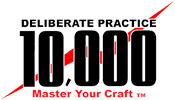Deliberate Practice
Application of the B-SAHF (Building, Smoke, Air Track, Heat, & Flame) organizing scheme for critical fire behavior indicators to photographs or video of structure fires provides an excellent opportunity to develop your knowledge of fire behavior and skill in reading the fire. As you complete this Reading the Fire exercise, think about what you saw and what you did not see. Did you recognize developing conditions, what might you have missed? Watch the video several times. Remember that deliberate practice is focused on continuous improvement and requires repetition of critical skills.
Residential Fire
Download and print the B-SAHF Worksheet and then view the first 25 seconds of the following video of conditions on Side A of a residential fire. First, describe what you observe in terms of the Building, Smoke, Air Track, Heat, and Flame Indicators. Second, answer the following five questions:
- What additional information would you like to have? How could you obtain it?
- Where do you think the fire is located?
- What stage(s) of fire development is the fire likely to be in (incipient, growth, fully developed, or decay)?
- What burning regime is the fire in (fuel or ventilation controlled)?
- How would you expect the fire to develop over the next two to three minutes?
FlashoverTV is powered by FireRescue1.com
Back the video up to the beginning and then watch the first 45 seconds of the clip. Consider the following questions:
- What changes in in fire behavior did you observe?
- What fire behavior phenomena occured? What changes in conditions were the likely cause?
- How could the crew on the hoseline have mitigated the hazards presented by this change in fire behavior?
After completing the B-SAHF exercise, view the remainder of the video. Safe and effective fireground operations require that firefighters and officers are proficient at reading the fire and managing the fire environment. Developing proficiency requires ongoing deliberate practice.

Ed Hartin, MS, EFO, MIFireE, CFO